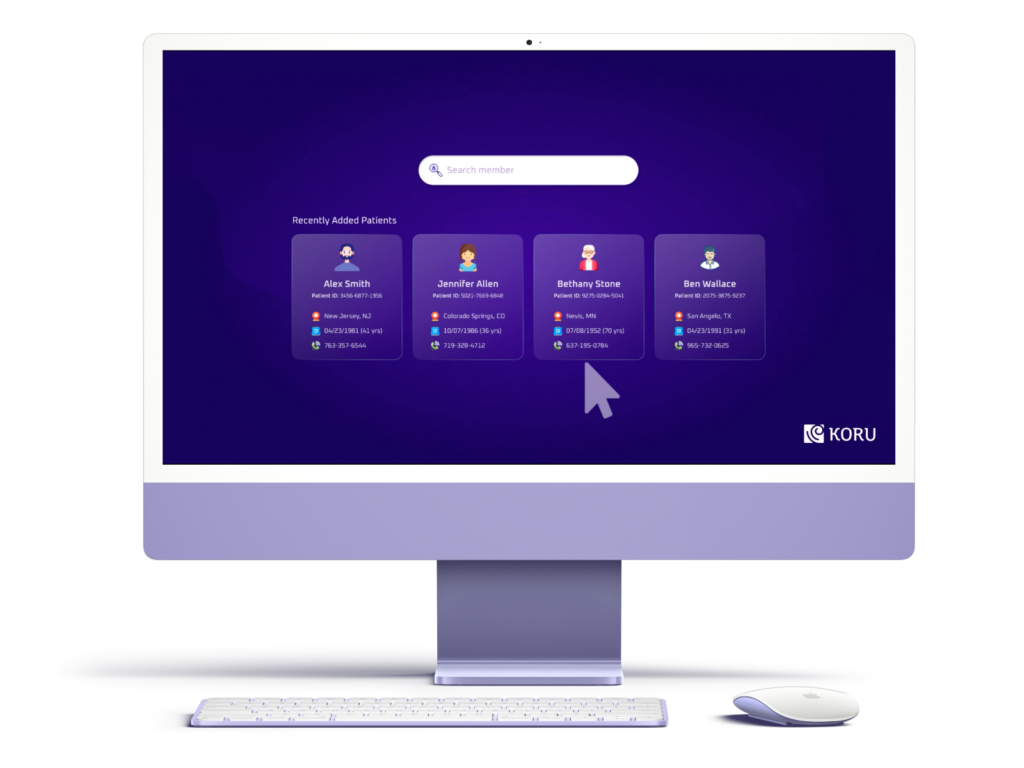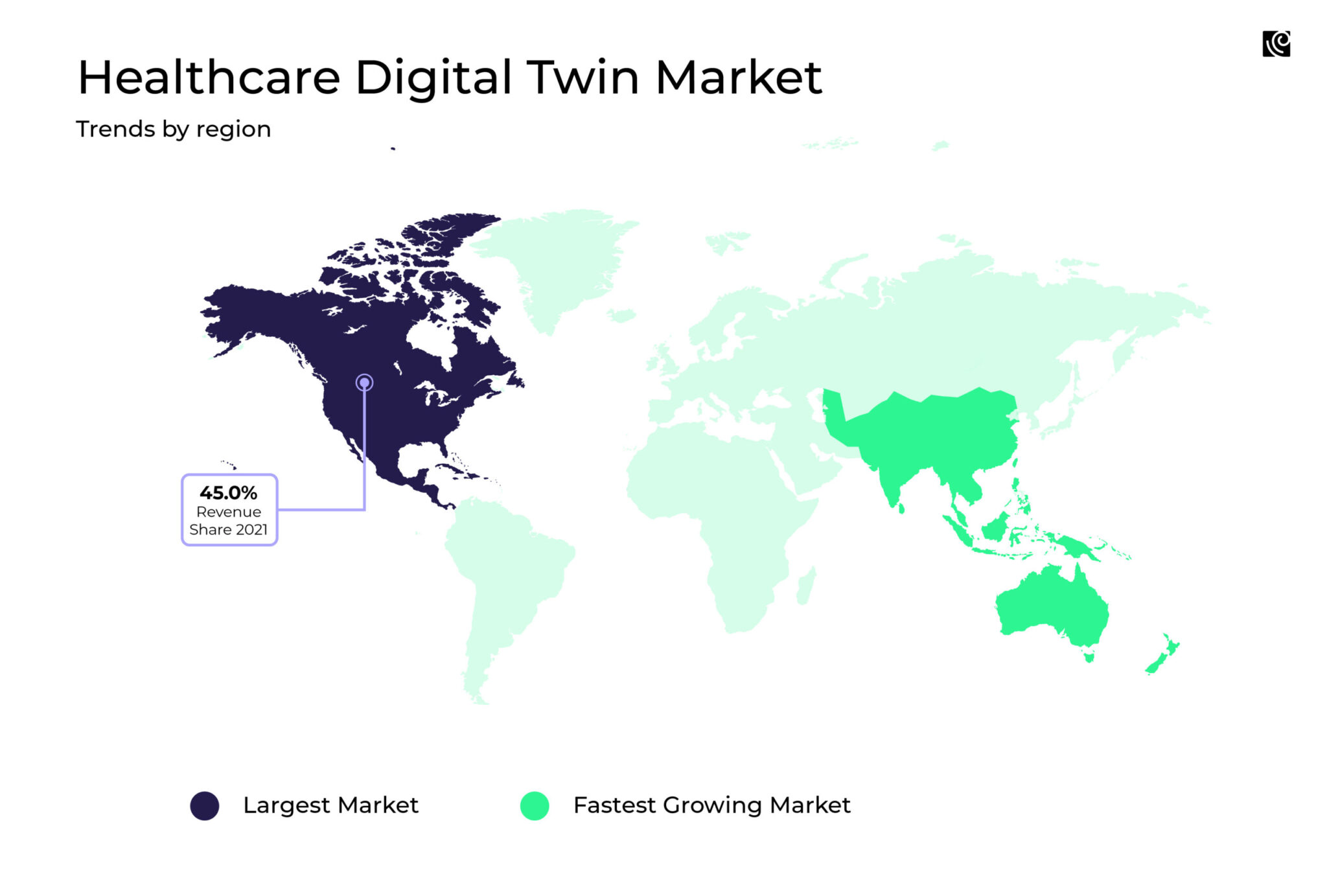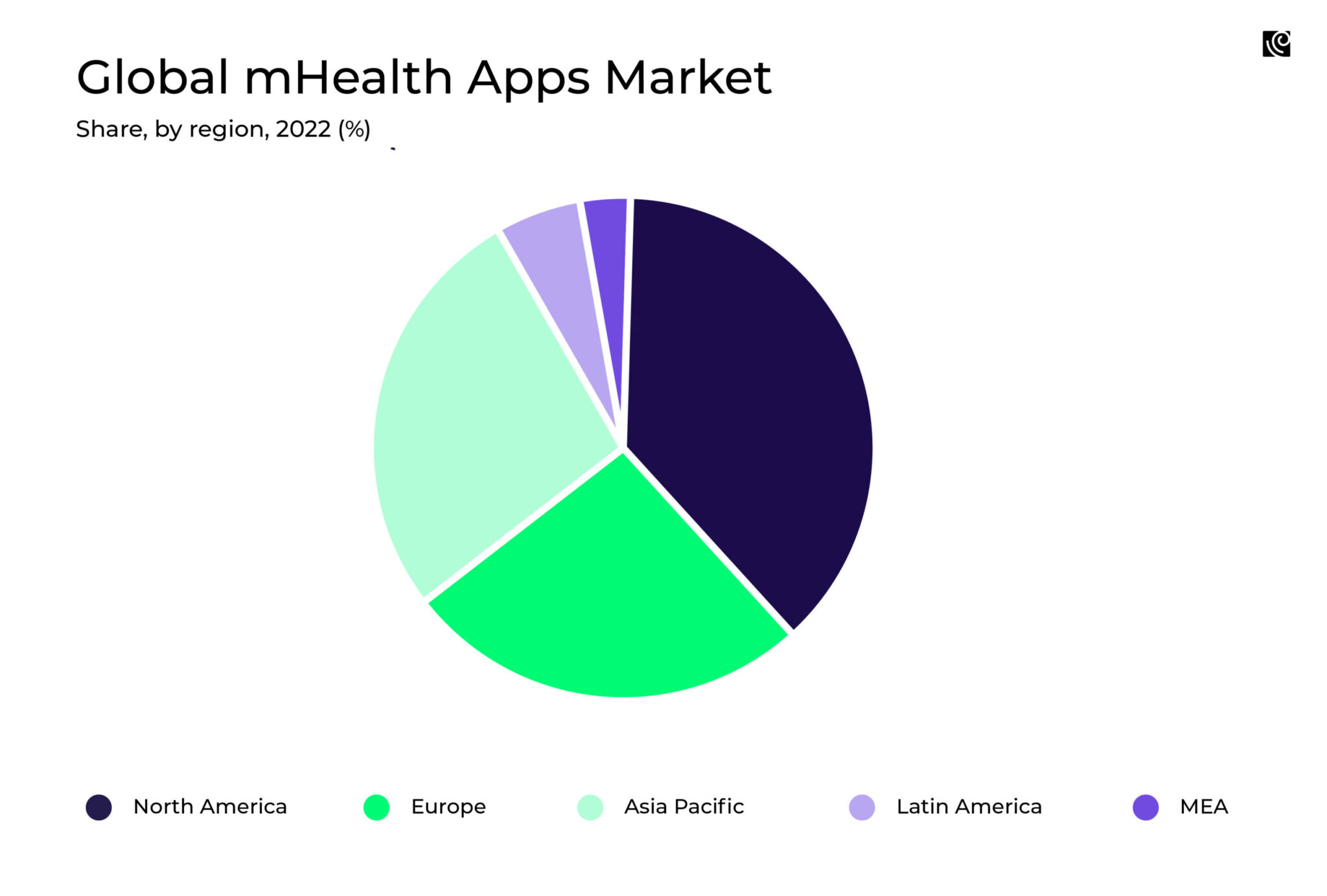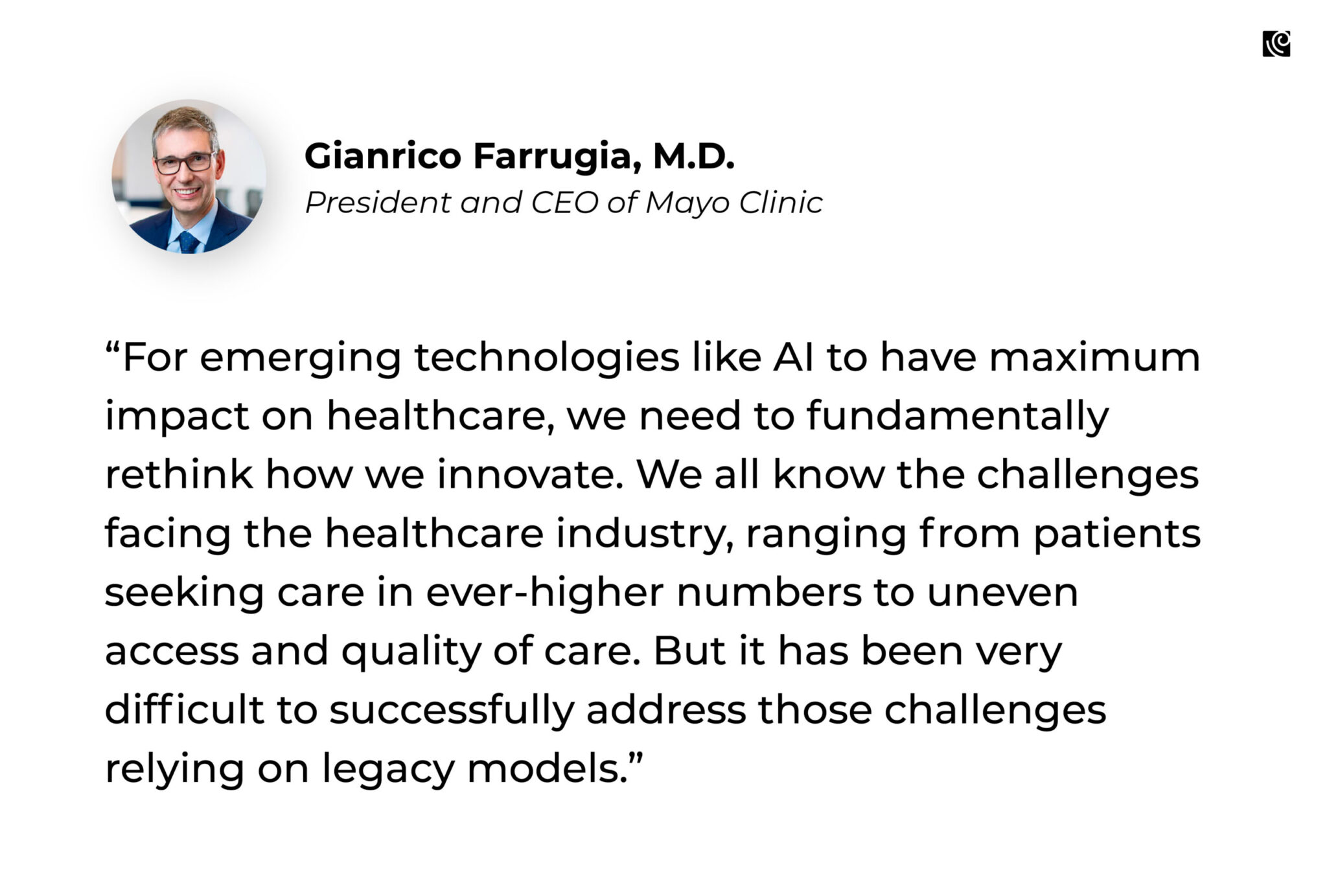The health-tech sector is experiencing an unprecedented boom, with rapid growth and substantial revenue projections reshaping the industry’s landscape. With an expected revenue of USD 809.2 billion by 2030, according to Grand View Research, the opportunities in the digital healthcare space are immense.
Digital health technologies have the potential to revolutionize healthcare delivery, making it more accessible, efficient, and patient-centered. We must embrace these innovations and ensure their responsible implementation.”
Dr. Soumya Swaminathan, Chief Scientist at the World Health Organization.
The global demand for digital healthcare solutions has skyrocketed, particularly after the COVID-19 pandemic—telemedicine, remote patient monitoring, and other digital health technologies have become commonplace, transforming the way healthcare is delivered. Giants like Johnson & Johnson Medical Diagnostics, which registered an impressive $26 billion in revenue, exemplify the potential for growth and success in the industry.
To understand the growth pattern and the emerging trends in healthcare technology, we researched and curated ten crucial digital healthcare statistics that shed some light on the healthcare industry’s growth. These statistics are relevant markers for product leaders to redefine their product vision and adopt a proactive approach.
10 Healthcare Statistics that Present the Key to the Success of Digital Healthcare Applications
Rise of Personalization in Healthcare

The era of one-size-fits-all healthcare is fizzling out faster than product leaders can keep up with. In 2023 and beyond, the rise of personalization in healthcare revolutionized how medical treatments and interventions are tailored to meet the specific requirements of patients. Be it aftercare recommendations post-discharge or AI-designed therapy, health information technology is driving these advancements by facilitating better communication among healthcare providers and streamlining processes that improve patient experiences.
Investments in Personalized Care are increasing
Personalization is a rising trend in healthcare, driven by technology-driven innovations. The medical devices market, valued at $442.5 billion in 2020, has seen significant growth trends despite temporary declines due to supply chain issues caused by lockdowns. Factors such as the opening of healthcare units, increased production of PPE and ventilators, and a rising demand for technological advancements have contributed to this growth. As per McKinsey, the HealthTech market is projected to generate an annual value of $350-$410 billion by 2023.
What does it mean for Healthcare Product Leaders?
This investment will enable a deeper understanding of patients, flexible delivery of solutions, and personalized care. As healthcare product leaders invest in personalized care, they can unlock a range of benefits that contribute to the success of digital healthcare applications, including:
- Better patient outcomes
- Increased patient satisfaction
- A deeper understanding of patients’ needs
- Improved Treatment Effectiveness
- Enhanced patient engagement
Use of Digital Twin Technology For Personalized Care, Precision Medicine, and Genomics
The global healthcare digital twins market is estimated to have reached a value of USD 462.6 million in 2021, and it is projected to grow at a CAGR of 25.6% from 2022 to 2030.
What does it mean for Healthcare Product Leaders?
Digital twins, which create virtual representations of healthcare data, such as lab results and human physiology, offer several benefits in terms of optimizing costs, improving efficiency, and anticipating future demand. The technology enables real-time data capturing, effective interventions, and data-backed feedback, transforming the medical industry and the healthcare sector.

The North American region has emerged as a dominant player in the healthcare digital twins market, accounting for over 45.0% of the market share in 2021. This can be attributed to the high adoption rate of automation and digital solutions in healthcare facilities across the region.
Key players such as IBM Corporation, Microsoft, and IQVIA have a strong presence in North America, further driving the adoption of digital twin technology.
-Grandview Research
Additionally, the region benefits from a well-developed digital infrastructure, supported by lucrative funding and favorable government initiatives, which are expected to fuel the demand for digital twin technology in the healthcare sector.
It enables healthcare product leaders in North America to capitalize on the region’s advanced digital infrastructure and the presence of key industry players. The region’s favorable market conditions create opportunities for product leaders to collaborate with healthcare providers, research institutions, and technology companies to drive its adoption and implementation.
Rise of Personalized M-health Apps
The global mHealth app market size was valued at USD 43.5 billion in 2022 and is expected to expand at a compound annual growth rate (CAGR) of 11.6% from 2023 to 2030.
What does it mean for Healthcare Product Leaders?

Global mHealth solutions empower patients to change their drug prescriptions, schedule doctor appointments, and personalize notifications, ensuring important dates and medication reminders are not overlooked. The rise of personalized m-health apps offers healthcare product leaders multiple advantages such as patient empowerment, improved medication adherence, tailored health education and resources, and so on.
2.5 billion people worldwide own a mobile phone and there is huge potential for mHealth to facilitate unprecedented access to specialist clinical diagnostics and treatment advice.
National Library Of Medicine
In the United States, 56% of physicians have engaged in discussions about mHealth with their patients, and 26% have been asked about mHealth by their patients, indicating a growing interest from both sides.
However, despite this interest, there is a lack of clinical guidance on how healthcare providers can effectively utilize mHealth apps to add value to patient care. The potential value includes improvements in the speed and accuracy of diagnosis, personalized treatment plans, behavioral change support, patient education, and enhanced access to established therapies like cognitive-behavioral therapy (CBT).
Addressing these challenges, healthcare product leaders have the opportunity to capitalize on the rising demand for mHealth apps by developing innovative solutions that enhance patient empowerment, improve medication adherence, provide tailored health education and resources, and address other critical healthcare needs. By leveraging the capabilities of mHealth apps, product leaders can revolutionize the healthcare landscape and deliver valuable benefits to patients worldwide.
Predictive health analytics for predicting future patient outcomes
Medical technology is driving advancements in predictive health analytics, with 60 percent of healthcare executives stating that their organizations have adopted this technology.A survey by the Society of Actuaries. The use of predictive analytics yielded positive outcomes, with 42 percent of organizations reporting improved patient satisfaction and 39 percent achieving cost savings.
Predictive analytics is gaining traction in healthcare, with 60 percent of healthcare executives stating that their organizations have adopted this technology.
A survey by the Society of Actuaries.
The use of predictive analytics yielded positive outcomes, with 42 percent of organizations reporting improved patient satisfaction and 39 percent achieving cost savings.
What does it mean for Healthcare Product Leaders?
Predictive analytics, fueled by machine learning, is revolutionizing healthcare. It leverages machine learning, statistical modeling, and data mining to predict future patient outcomes and guide treatment decisions.
Healthcare providers can proactively manage diseases, predict readmissions, and optimize resource allocation by analyzing diverse data sources, including electronic health records and patient-generated data. Machine learning algorithms analyze patient information to identify high-risk individuals and enable early interventions, while also helping reduce readmission rates.
The Rise Of Telehealth & Remote Patient Care
Patients can now connect with healthcare providers from the comfort of their own homes, receive virtual consultations, and access essential medical services remotely. This transformative trend offers convenience, accessibility, and improved healthcare outcomes, particularly in situations where in-person visits may be challenging or not readily available.
Telehealth investors are making big bets across the world
McKinsey’s report highlights the staggering growth of telehealth, with a remarkable 83% increase in total annual revenues in 2021 compared to 2019.
The initial months of the pandemic witnessed a staggering 78-fold surge in telemedicine usage, emphasizing the vital role it played in bridging the gap between patients and healthcare providers.
What does it mean for Healthcare Product Leaders?
The COVID-19 pandemic accelerated the adoption of telehealth and remote care solutions, transforming the healthcare landscape. As the world faced unprecedented challenges, telehealth emerged as a lifeline, providing convenient access to quality healthcare services.
“Anything that allows you to get care instantaneously is helpful, and some of these virtual primary-care practices make that front door and access so much easier than typical primary care.”
Dr. Ateev Mehrotra, a professor of healthcare policy at Harvard University
The rise of telehealth presents healthcare product leaders with significant opportunities to meet the growing demand for remote care solutions. With the substantial increase in telehealth revenues and the surge in telemedicine usage during the pandemic, product leaders can develop innovative telehealth products and platforms to provide convenient and accessible healthcare services.
Increased Use of Healthcare Mobile Applications For Monitoring
Statista reports that mobile devices will reach a staggering 18.2 billion by 2025. Another study found that 93% of primary care practitioners in 24 countries use digital technologies, such as electronic medical records (EMRs).
What does it mean for Healthcare Product Leaders?
These findings underscore the growing integration of digital solutions in healthcare, as practitioners embrace technology to enhance patient care, streamline processes, and improve healthcare outcomes. The widespread adoption of mobile devices and digital technologies in healthcare indicates a shift towards a more connected and technology-driven future in the field of medicine.
Telemedicine for home-based care
As per Bain & Company, currently, 17% of doctors (in the USA) are using telemedicine and this number is expected to grow to 40% in the coming couple of years.
What does it mean for Healthcare Product Leaders?
Telehealth and remote patient monitoring solutions are set to transform healthcare delivery, enabling high-quality home-based care while reducing costs. Primary care physicians are embracing technology to enhance healthcare access and manage complex cases, particularly those involving chronic diseases and high-risk patients. Telehealth now encompasses more than urgent virtual care, with a shift towards longitudinal virtual care, integration with other virtual health solutions, and hybrid virtual/in-person care models.
AI & Automation for Reducing the Healthcare Burden
With rising demands for precision medicine, increasing patient volumes, and a shortage of healthcare professionals, AI offers promising solutions to streamline processes, improve efficiency, and enhance patient care.
Investments in the healthcare AI software
Investments in the healthcare AI software, hardware, and service market are poised to skyrocket, reaching a whopping $34 Billion Worldwide by 2025.
This is further substantiated by Tractica‘s findings, which highlight the diverse areas where AI will play a crucial role in managing multiple areas of the healthcare industry. This includes Medical image analysis, Healthcare VDAs, Computational drug discovery and drug effectiveness, Medical treatment recommendation, and more.
What does it mean for Healthcare Product Leaders?
AI/ML and automation are revolutionizing healthcare services, enhancing efficiency, accuracy, and proactivity. Looking ahead, these technologies will be vital in building resilient healthcare solutions that address the gaps exposed during the pandemic.

The unprecedented shift towards virtual healthcare has created a demand for automated solutions to support overwhelmed healthcare professionals and anticipate their needs. Efficient, touch-free interfaces leveraging NLP (natural language processing) are crucial, enabling seamless connection with electronic health records for faster and more accurate information retrieval.
Rise of chatbots in healthcare for personal assistance
Chatbots have emerged as a valuable technology for enhancing engagement, with 22% of individuals utilizing them. Research suggests that incorporating chatbots results in twice the level of engagement. In the healthcare sector, the revenue generated from chatbots is projected to reach $498 million by 2029.
What does it mean for Healthcare Product Leaders?
Incorporating effective chatbots within healthcare apps and websites can significantly reduce bottlenecks by automating various steps such as symptom-checking and appointment booking. These intelligent virtual assistants provide timely assistance and guidance, streamlining the patient journey and improving overall healthcare access.
Data Analytics for large-scale healthcare Support
Today vast amounts of healthcare data are harnessed to provide large-scale support in the healthcare industry. In an era where data is abundant, the ability to analyze and derive meaningful insights from this information has become paramount.
Investment in Healthcare Analytics
According to Global Wire, the Healthcare Analytics Market Size will be Worth US$ 52.2 Bn by 2026. The average CAGR will touch 36.6%.
What does it mean for Healthcare Product Leaders?
This surge in investment highlights the growing recognition of the importance of data-driven insights in improving healthcare outcomes, optimizing operations, and reducing costs. Healthcare organizations are increasingly leveraging analytics tools and technologies to extract valuable insights from vast amounts of healthcare data, empowering informed decision-making and driving transformative change in the industry.
Healthcare IT Market Size and Trends
The global healthcare IT market is expected to reach $231.2 billion by 2025, growing at a CAGR of 13.4% from 2020 to 2025, according to MarketsandMarkets. This impressive growth is driven by the increasing adoption of digital technologies, such as EHRs, telemedicine, and artificial intelligence (AI), which are revolutionizing patient care and reducing healthcare costs.
The demand for healthcare services is rising, particularly in emerging markets, pushing healthcare providers to improve their operational efficiency and reduce costs. The healthcare IT market is expected to be dominated by the US, which is projected to account for over 40% of the global market share, followed by Europe and Asia-Pacific.
One of the key trends driving the healthcare IT market is the increasing adoption of cloud-based solutions. These solutions are expected to account for over 30% of the global market share by 2025, offering healthcare providers scalable, cost-effective, and secure ways to manage patient data and improve healthcare delivery.
IoMT Market Size and Trends
The global Internet of Medical Things (IoMT) market is expected to reach $142.45 billion by 2026, growing at a CAGR of 28.9% from 2021 to 2026, according to MarketsandMarkets. This rapid growth is fueled by the increasing adoption of connected medical devices, such as wearables and implantable devices, which are enhancing patient care and reducing healthcare costs.
Remote patient monitoring is a significant driver of the IoMT market, expected to account for over 30% of the global market share by 2026.
Design as A Differentiator
The COVID-19 pandemic has brought to light significant challenges in handling widespread infections and managing healthcare resources, leading to unavoidable complications. These circumstances have compelled individuals to confront difficult conversations head-on, acknowledging the urgent need for change and improvement in healthcare systems.
It has exposed the vulnerabilities and shortcomings of healthcare systems worldwide, necessitating a proactive and inclusive approach to healthcare design. Design thinking emerges as a crucial differentiator in the industry, shifting the focus from reactive to proactive measures. By leveraging available technologies and resources, design thinking enables the creation of a resilient and efficient digital healthcare system.
Design thinking in healthcare requires a deep understanding of patient requirements and advancements in medical science. It involves thorough user research, brainstorming, ideation, and prototyping to develop proactive, resilient, and inclusive healthcare solutions. Strong design thinking principles are vital for the present and future of healthcare systems, enabling swift recovery from the pandemic and prevention of future global outbreaks.
To achieve the full potential of design thinking in healthcare, partnering with the right UX design agency is crucial. A specialized healthcare UX design agency brings extensive experience in creating intuitive and user-friendly interfaces tailored specifically for the healthcare industry. Their expertise in understanding the unique needs of patients and healthcare professionals can significantly enhance the design process. By partnering with a healthcare-focused UX design agency, organizations can create a seamless user experience that drives engagement and links to our healthcare service page.
By incorporating design thinking into healthcare design and partnering with the right UX design agency, organizations prioritize patient-centricity, innovation, and adaptability. This transformative approach not only addresses complex problems but also ensures a healthcare system that is prepared for the challenges of today and tomorrow.










